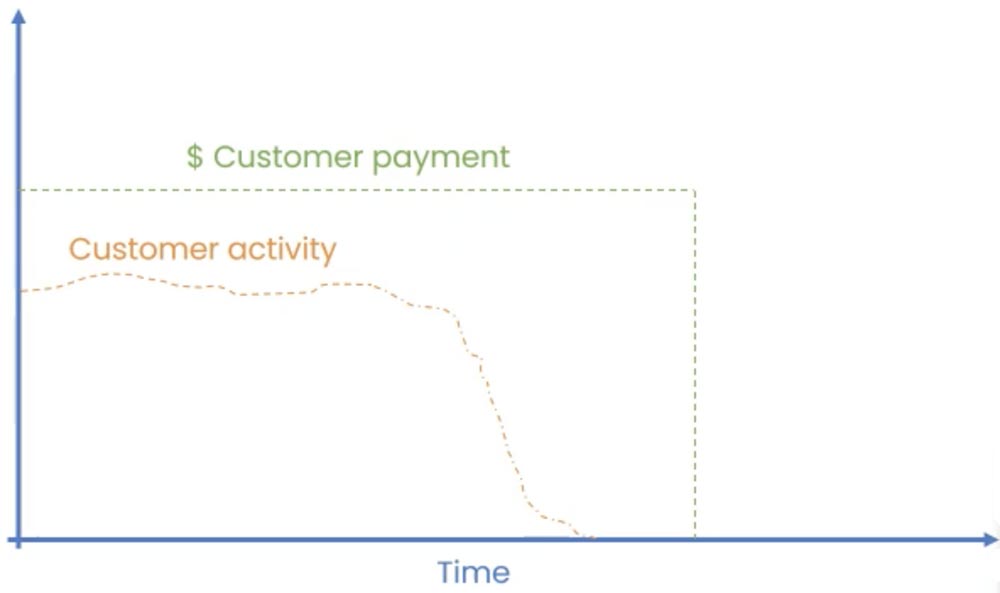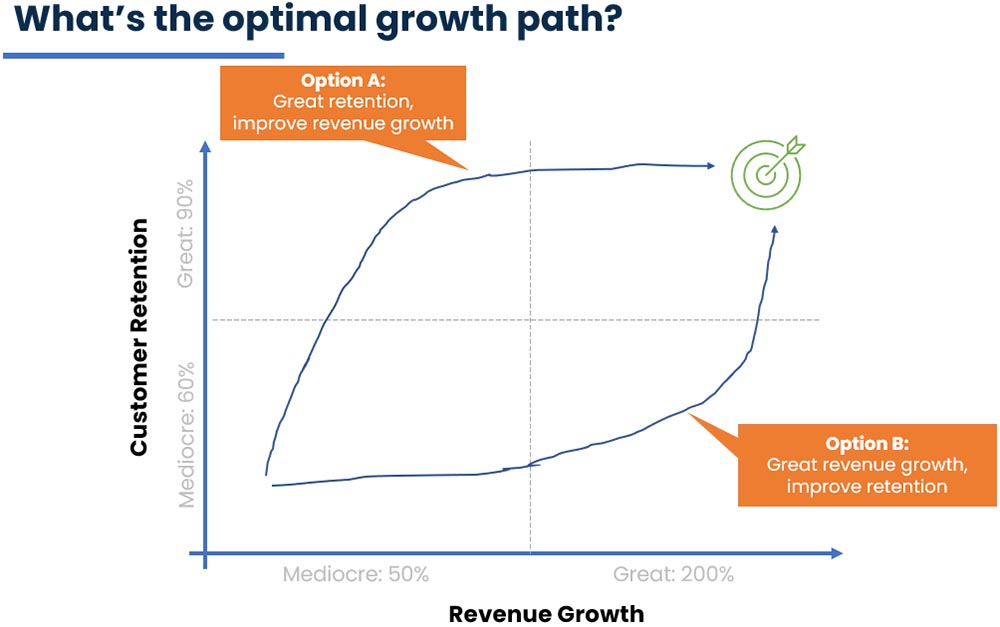Who is Jacob de Lichtenberg?
With several CPO positions under his belt, Jacob is a leading voice within the Scandinavian Product scene. Jacob currently works as CPO for ComplyCloud.
What often happens when implementing OKRs
What I often see happen when working with OKRs is that objectives are set by the management. In turn the team comes up with a set of metrics to go along with it. Those metrics could be defined by the product manager after which the team proposes key results. The problem with that approach is that the key results don’t really matter to anyone other than the team and, if lucky, maybe a team manager. These kinds of key results don’t seem to matter in the big picture.

The other thing I often see is that key results become small projects – describing everything that you do in your company in three month projects. This becomes a problem as the world evolves. As the world evolves, the objectives change. In this case, the metrics are typically defined by the project and not by the company.
What is a model
This article is about product modeling. Let’s start with defining what a model is. It’s a fundamental question. Everybody, of course, knows what a model is: it’s a representation of a system. We use models to understand things and to predict things. A good example is a map. The interesting thing about models in relation to OKRs and metrics is the question of accuracy.
For example, a one-to-one map is completely useless. It might be super good as a real world representation but it really doesn’t help you navigate. Because it’s very big! So the idea of a model is actually to create something you can use for guidance,
Something you can use to do something. Of course there are also models in for instance pharma and other places where it’s better to have high precision. But within the field of product, the accuracy, maybe the model itself, is more important than the accuracy as such
Let’s take the example of weather forecasting. It’s a set of equations, attempting to represent the atmosphere for the purpose of weather forecasting. It’s not perfect, but it’s better than not having a model. It definitely fails over and over and over again. But everybody is guided well by the model regardless. In such a model, users know that not everything is true about the model – which is an important fact to bring up. It’s a good thing. Expectations are set. The model serves as a way to understand and predict if we should do something. Should we go to the beach tomorrow?
Why should I create a product model?
A growth model is an attempt to represent whether your business is growing. A product model is an attempt to represent whether your product efforts are creating the impact you want it to have. Of course, that impact should lead to your business growing
If you don’t have a product or growth model, your model often just defaults to revenue generation or sales or profitability, which doesn’t help much in either inspiring teams or inspiring employees.
Trying to understand what you need to do to create impact, teams often end up in situations driven by requests from customers. Instead of you trying to take a strategic approach to where you want to go, teams end up chasing more sales. “We have a company over here – they’ll pay for this. Let’s go that way because then we can meet our revenue projections for this quarter.”
“All models are wrong but some are useful”
– George Box
Growth Modeling
It’s important to understand how these models can be useful to navigate a company towards success.
What is the best metric to prove that your B2B SaaS company is growing?
The growth model is about whether we can sell to people, how much customer churn, can we expand the market, upsell, etc. A growth model tells you something about whether you are making more money. It typically entails a few good sales metrics. The typical problem with problem sales metrics is that they are all very lagging.
An example of lagging is when your current customer is paying and then they stop playing. Before this happens, customers will typically be active customers and then all of a sudden stop being active – before they stop being a customer. It’s something we can predict. So the payment itself here, a churn, is a lagging metric.

We might be able to measure it - so what could we actually measure? What would be a faster way to know whether we are growing as a company than revenue? A growth model will measure something similar to these metrics, but it will be something different. It will be less lagging.
The optimal growth path
What is the optimal growth path?

Consider these two trajectories, starting from the same point in time. To begin with you are low on customer retention and very low on revenue growth per year. You can then decide between two paths. One is to first focus on great retention, with which you will need to later improve your revenue growth. That takes longer, but will get you there. The other option is to focus on great revenue growth and then afterwards on improving retention.
Which path do you believe is the optimal growth path?
For the last five, seven, six, eight years, every single venture capitalist has been pushing for Option B – for the revenue growth path. They have been focused on growth first at any cost. Right now, that seems to be changing and now retention is becoming increasingly more important.
But is it premature to choose option B, if you don’t have product-market fit yet?
I think product-market fit is critical. When you decide to scale you need to focus on the things that define whether you have product-market fit – so you let the customer wallet do the talking, right? Now, customer retention, if they stay being customers, means that they want to keep using your product. Meaning you are giving them the value they are looking for. So retention is in turn a very good representation of product-market fit. However, customer retention, like other things, is a lagging indicator. So we actually need a leading indicator of retention.
Toward a Product Model
A leading indicator of retention could be engagement. But there’s not a universal leading indicator as we have in terms of financial growth – it needs to be specific to your product. It’s actually possible to create a model that predicts it if you have tons of anonymous data, you can build a pretty accurate model.
A growth model kind of predicts retention as retention is closely connected to getting the value you want from buying the service. But revenue is almost like a sub-metric to the important metric which is increased conversion.
Running OKRs so that they don’t suck
First thing: Have your housing order. You’ve got to have a vision. You have got to have a strategy. If you ask me, you have got to have a model and you also have to have some principles that help guide decision-making. Those principles and the model is part of your strategy.
Watch the full video
The transcription of Jacob’s talk ends here. Watch the full video to learn about how to create your own product model and let Jacob take you through examples of how product models can help guide your product strategy - or be part of it.
Find mentors who can help you with Analytics & Metrics